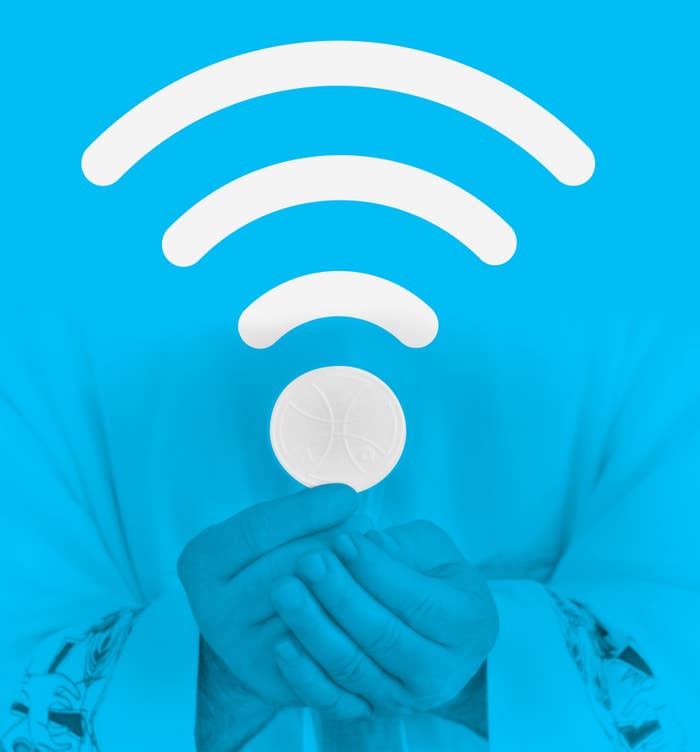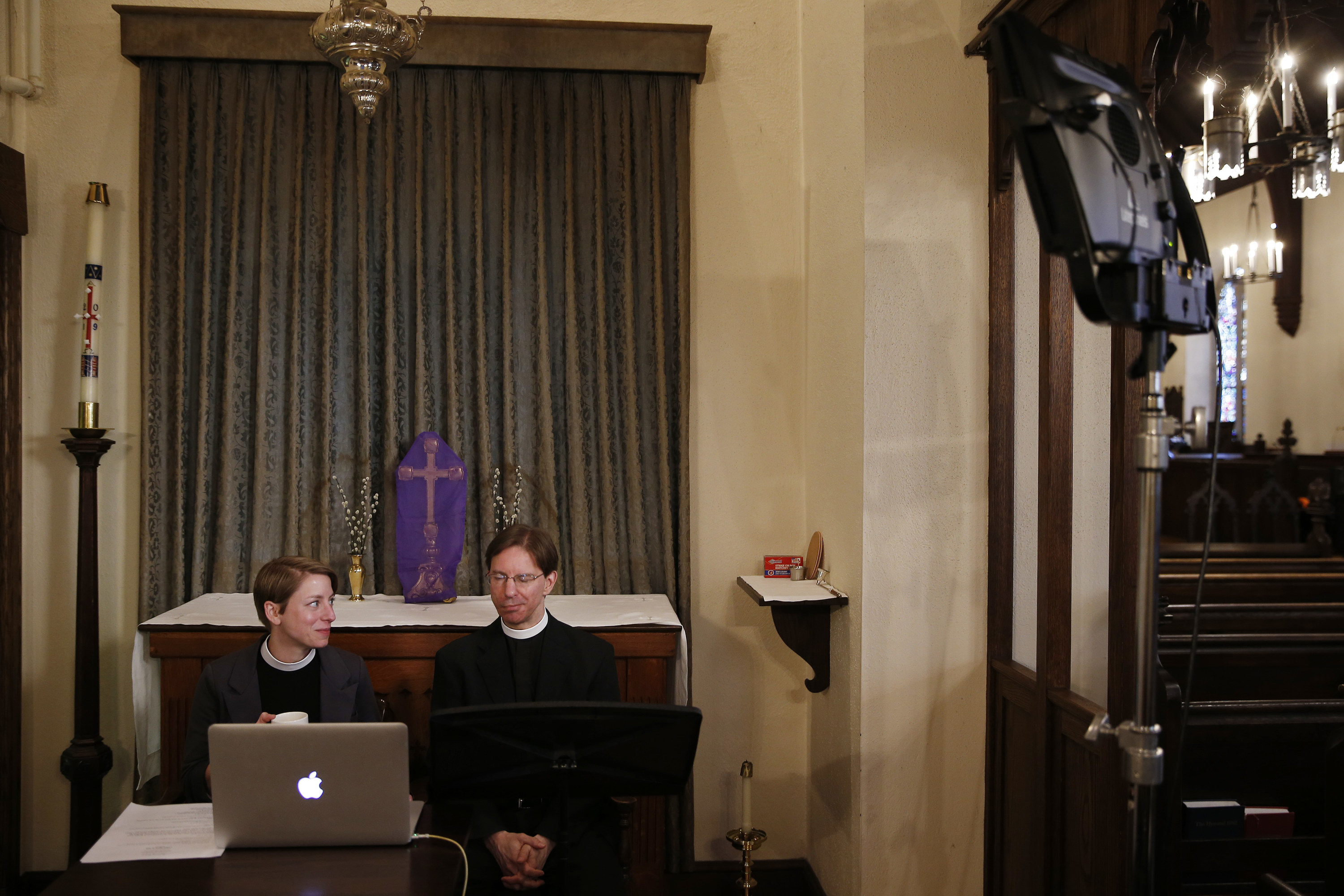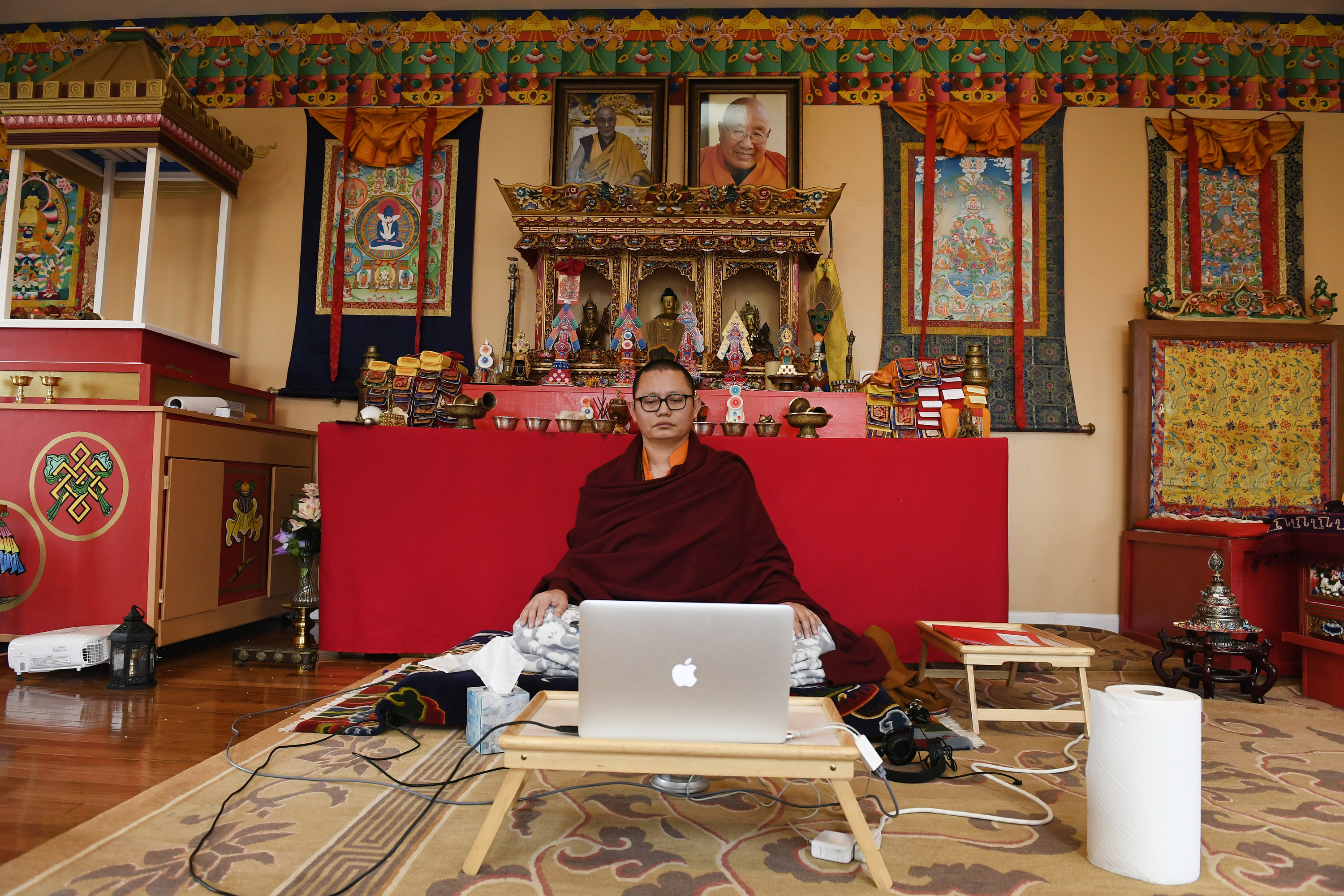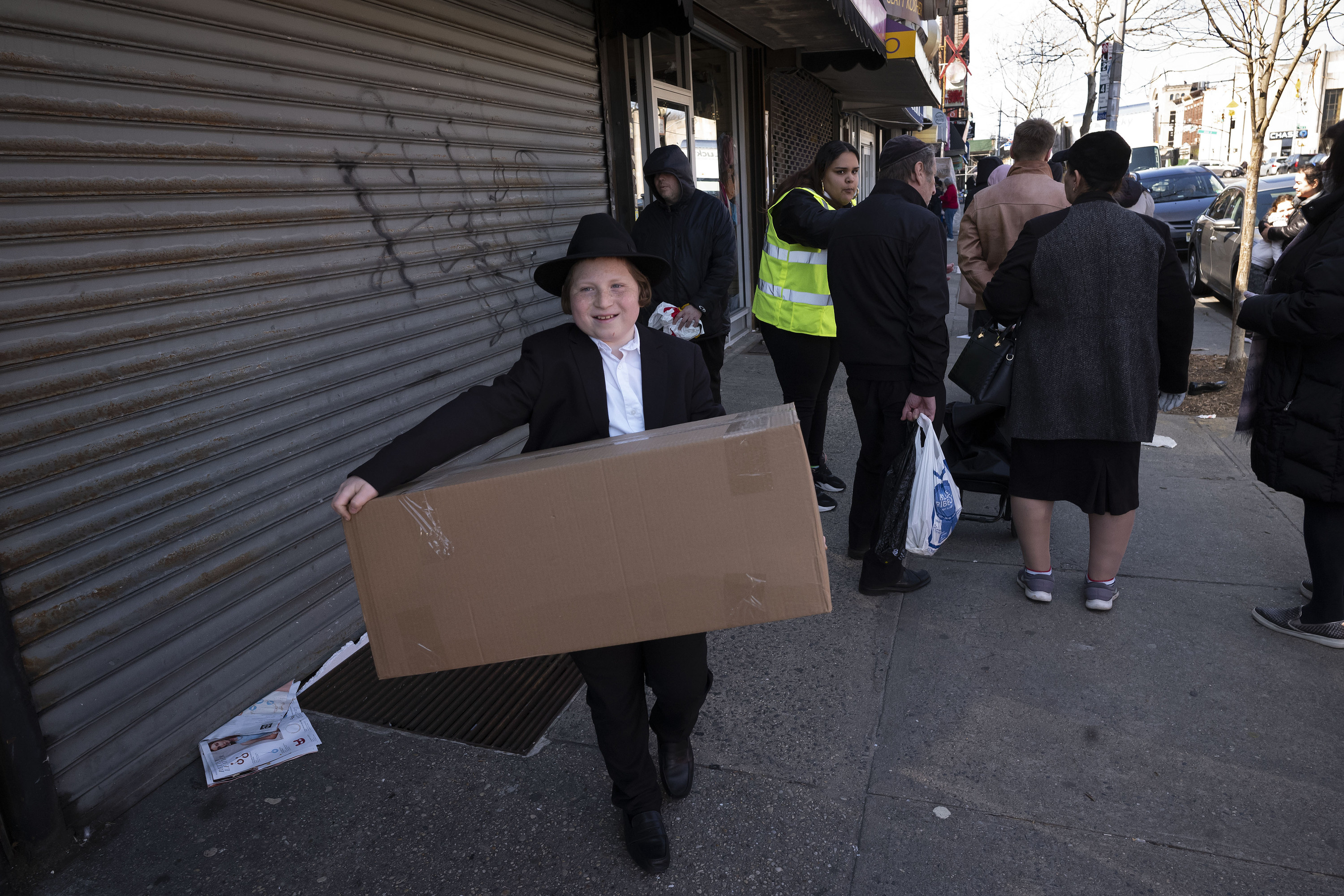
The journalists at BuzzFeed News are proud to bring you trustworthy and relevant reporting about the coronavirus. To help keep this news free, become a member and sign up for our newsletter, Outbreak Today.
In South Carolina, a Baptist pastor wonders how to solicit donations during a Facebook Live stream of his Sunday service without alienating his viewers.
In Connecticut, a rabbi fields perturbed emails about worshippers with bad singing voices belting out prayers in the Shabbat Zoom room.
In San Francisco, an Episcopalian rector encourages his congregants to leave thoughts on Scripture in the chat window of his virtual liturgy.
In Northern Virginia, an imam questions whether or not he can read social signals well enough through a screen to give good spiritual counseling.
And in Brooklyn, a Catholic priest takes confession across the room from a parishioner, at a distance safer than the booth that has fallen, like his pews, into disuse.
Around the nation, houses of worship have largely (though not wholly) closed their doors, afraid of spreading the deadly coronavirus. Yet in the middle of the crises, religiosity skyrockets — and this one is no exception. A recent study from the University of Copenhagen found that for every 80,000 new cases of COVID-19 found in a country, online searches for prayer doubled. To address this wrenching irony, faith leaders across the United States have turned to virtual tools, through which they stream services, homilies, and text studies and offer individual counseling.
This distanced worship has allowed clergy to maintain a semblance of community during a despairing and isolated time. But distance has also left religious leaders with an impossible circle to square. So many aspects of religious practice and community depend on physical presence, and technology can’t replace all of them.
Houses of worship have for years offered online versions of their services, often to reach homebound congregants. But the elimination of physical gatherings has changed those dynamics, faith leaders said.
“It was surreal,” Gerson told BuzzFeed News, “to be looking into a congregation of empty chairs.”
Jordie Gerson, rabbi at the Greenwich Reform Synagogue in Greenwich, Connecticut, had already participated in the difficult decision to cancel a March 8 carnival for the Jewish holiday of Purim. The following weekend, after consulting with a group of physician synagogue members, Gerson led Shabbat services from an empty sanctuary, over Zoom, the video chat app that has grown significantly during the pandemic.
“It was surreal,” Gerson told BuzzFeed News, “to be looking into a congregation of empty chairs.”
But there were more participants in the Zoom services than Gerson usually sees in the crowd on a Friday night. And that Shabbat, Gerson said, was charged.
“The first week was one of the most moving services I’ve ever done. It felt like we were really praying for something,” Gerson said. “Not that we’re ordinarily not, but it felt like there was an urgency and a gravity to our prayers that is usually not that acute.”

For Pastor Douglas Slaughter of Second Baptist Church in Aiken, South Carolina, sitting on a chair on the chapel floor and addressing a laptop screen went directly against his dynamic preaching style, developed over four decades in the ministry.
“It was a challenge,” Slaughter said. “I’m a very animated speaker. I like to move around, to talk to people.”
These early, empty-house digital services each led to that hallmark of streaming video: comments from crotchety users.
“I got so many emails saying so-and-so didn’t mute themselves [on Zoom],” Gerson said. “‘‘I could hear Moshe Feinstein singing the oseh shalom [the Jewish prayer for peace] and he has a terrible voice.’ A few people I kept muting, and they kept unmuting themselves.”
After Slaughter delivered a sermon encouraging his parishioners to “walk in faith, not fear,” one older viewer offered an even blunter appraisal.
“‘Rev, you look fat,’” Slaughter recalled the congregant saying.
But not all of the feedback about digital worship has been negative — and some of it has been unexpectedly moving. Rector Paul Fromberg, of St. Gregory of Nyssa Episcopal Church in San Francisco, had wondered how he could virtually re-create his Sunday service, in which he encourages congregants to share their personal experiences.
“When we were on Facebook Live and on Zoom, people were putting lots of comments in the chat,” Fromberg said. “So I’d ask people to share words and phrases that stood out in the Scripture readings. … It was beautiful. People were attending to their own experience. We’re all looking for the blessing to come out of this time. Maybe people will get better about how they use their words in a public space like Facebook.”
Still, clergy fear that virtual worship cannot capture other, less-structured forms of religious communication. Imam Mohamed Magid of the ADAMS Center in Sterling, Virginia, uses Zoom and Facebook Live to give sermons and lead religious education remotely. But these virtual platforms don’t allow for the kind of informal communication Magid said is crucial to his work.
“Someone will walk up to me after Friday prayer and whisper in my ear that someone is sick in their family, or going through domestic violence,” Magid told BuzzFeed News. “Where is that whispering, that private talk? Online we have mass communication, yes, but not individual accessibility to share intimate ideas and information.”

And while virtual worship expands the potential reach of religious observance, it can leave some people behind. The ADAMS Center is one of the largest mosques in the United States, with branches and satellite locations that serve 5,000 families. Among those families are groups of people for whom Magid said virtual religious community simply isn’t sufficient.
“We have older members of the community, people whose English is not very fluent, who don’t have young people to help them with technology,” Magid said. “I’m worried about those people. You have to remember some of these elderly people are refugees. They take joy in physical gatherings. They feel the love. That kind of thing is missing big-time. I don’t think technology can replace that.”
Rabbi Gerson said that she’s conducting even the most intimate clerical work remotely.
"They take joy in physical gatherings. They feel the love. That kind of thing is missing big-time. I don’t think technology can replace that."
“I’m doing deathbed visits with people over FaceTime,” Gerson said. “I’ve never not been able to hold a dying person’s hand. I’m worried about people dying alone.”
Nor can virtual forms of gathering replace the broader community functions of many churches, synagogues, mosques, Hindu temples, and Sikh gurdwaras. Second Baptist Church runs a teen homework center, affordable and senior housing programs, and a pre-K–12 private school, all of which are made possible through the donations of its congregants. Pastor Slaughter, who is also helping to manage a $3 million building project for a new church, quickly realized the financial pressure that moving to exclusively virtual worship put on his congregation.
“We saw anywhere from a 50 to 60 percent drop in the first week,” Slaughter said. “If you extrapolate that out for two months, we would barely be able to pay our staff, much less build this new building.”
The church is now trying out a text-to-donate service for older worshippers, who may not have the technological skill to give through the apps Second Baptist already uses. But even as giving becomes a greater challenge for Slaughter, the move to virtual worship has made him wonder if solicitations over Facebook Live play differently than in person.
“My ministry now is this nebulous online church,” said Slaughter. “I’m very aware of that. There are several struggles. You don’t want people to think that you’re doing this for the money, particularly people who are not part of the congregation. So I have to try to find unobtrusive ways of, really, begging for money.”
As the COVID-19 lockdown enters its second month, the three major Abrahamic religions are celebrating their spring holiday, and each presents challenges for virtual worship.

Passover, one of the most important Jewish religious festivals, begins April 8. Rabbinical authorities in Israel have issued contradictory statements about the appropriateness of virtual seders (the Passover ritual meal). The Orthodox Union, the world’s largest kosher certification agency, issued strict guidance about limiting contact — an important step given the high COVID-19 rates in Orthodox neighborhoods in Brooklyn.
Ramadan, the Muslim holy month, starts April 23. The ADAMS Center won’t hold its usual iftars, the post-sunset meals that break the daily Ramadan fast. And the center hasn’t yet decided whether to livestream the nightly Tarawih prayer.
“People want to be close to God now.”
On March 25, President Donald Trump suggested the US could relax its social distancing guidelines by Easter (he has since backtracked). Pope Francis’s Holy Week liturgies will be livestreamed to Catholics throughout the world. Last month, he prayed to an empty St. Peter’s Square. Christian authorities “across the board” have ruled that Holy Communion can’t be given remotely, according to Fromberg. In its place, Fromberg has encouraged his congregants to bless bread and wine at home, in the style of the Jewish Sabbath prayers.
And in his livestreamed Sunday mass, Monsignor David Cassato, of St. Athanasius Church in Brooklyn, addresses the problem directly.
“I put the Blessed Sacrament out on the altar for 5–10 minutes,” said Cassato. “I ask people to quiet themselves and realize that Jesus is here with you and to pray to him spiritually. You may not be able to physically receive him, but you can pray to him spiritually.”
The Diocese of Brooklyn, under which Cassato serves, has practice in reaching remote worshippers. Its television network, NET TV, broadcasts mass in seven languages. Still, Cassato said, there’s no substitute for the real thing.
“I just pray that we can go back to church soon,” Cassato said. “People want to be close to God now.”
